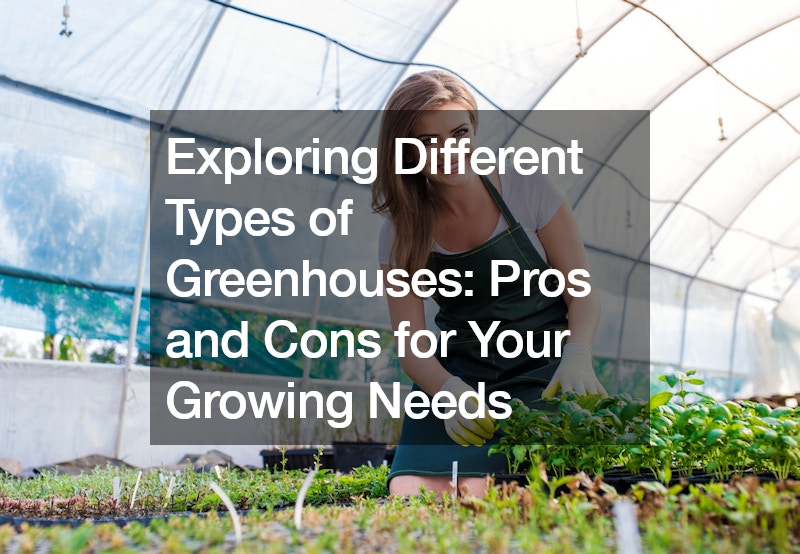Greenhouses have revolutionized agriculture by providing growers with controlled environments for cultivating crops year-round. These structures come in various designs, each offering unique advantages and challenges. In this comprehensive guide, we will explore different types of greenhouses, discuss their pros and cons, and emphasize the importance of selecting the right one for your growing needs.
Importance of Greenhouses:
Greenhouses play a vital role in modern agriculture by extending the growing season, protecting plants from adverse weather conditions, and optimizing crop yields. With the ability to control temperature, humidity, and light levels, greenhouses create ideal growing conditions for a wide range of crops, from delicate flowers to hearty vegetables.
By providing a sheltered environment, greenhouses shield plants from frost, wind, hail, and excessive rain, reducing the risk of crop damage and ensuring consistent production.
Moreover, greenhouses allow growers to cultivate crops that are not native to their climate or region. By mimicking the ideal growing conditions of different plants, greenhouses enable the cultivation of exotic fruits, herbs, and vegetables, expanding the diversity of available produce and meeting consumer demand year-round. Additionally, greenhouses provide a controlled environment for seedling propagation, allowing growers to start plants early and ensure healthy growth before transplanting them into the field.
Round Arch Greenhouse:
Round arch greenhouses are among the most common and affordable greenhouse designs. Their simple construction and minimal foundation requirements make them popular choices for hobbyists and small-scale growers. However, their use of single or double-wall film for covering may necessitate frequent replacements every four to five years, increasing maintenance costs over time. Additionally, their lightweight structure may be vulnerable to damage from heavy snow loads, limiting their suitability for regions with harsh winters.
Gothic Arch Greenhouse:
Gothic arch greenhouses offer improved strength and snow load resistance compared to round arch designs. Their curved shape promotes efficient snow removal, reducing the risk of structural damage during winter storms. However, excessive snow buildup along the sides may pose challenges, requiring regular clearing to prevent collapse. While gothic arch greenhouses are suitable for larger operations, additional support structures may be necessary for optimal snow load management.
Traditional Greenhouse:
Traditional greenhouses are engineered for durability and longevity, making them ideal for commercial growers and educational institutions. Their sturdy construction and straight-lined design allow for efficient ventilation and bed layout. However, their higher initial costs and the need for foundations may deter some growers, especially those with limited budgets. Despite these drawbacks, traditional greenhouses offer excellent lighting and structural integrity, ensuring reliable crop production year-round.
Geodesic Dome Greenhouse:
Geodesic dome greenhouses are known for their unique design and efficient heat distribution. Their spherical shape maximizes solar gain and promotes passive cooling, reducing energy costs and maintaining optimal growing conditions. However, their curved layout may limit efficient bed arrangement, making them less suitable for commercial operations. Additionally, obtaining approval for construction may be challenging due to their unconventional design and structural considerations.
Wall Pit Greenhouse:
Wall pit greenhouses utilize underground construction to leverage natural thermal mass for temperature regulation. While they offer energy-efficient cooling during summer months, their construction can be costly and complex, requiring reinforced concrete walls and excavation work. Moreover, their limited morning and evening light may impact plant growth and productivity, making them less suitable for commercial use.
Passive Solar Greenhouse:
Passive solar greenhouses maximize solar gain for year-round cultivation, offering energy-efficient heating and cooling solutions. Their south-facing orientation and insulated north walls optimize heat retention and snow removal, ensuring consistent crop production in varying climates. However, their effectiveness may be limited for commercial operations due to challenges in scaling and maintaining optimal temperatures. Additionally, the need for barrels to store heat may occupy valuable growing space, reducing overall productivity.
Chinese Greenhouse:
Chinese greenhouses feature a south-facing orientation with ample glazing for optimal light penetration and efficient snow removal. Their scalable design and efficient cooling capabilities make them suitable for various climates and growing needs. However, structural considerations and potential shading issues on the north side may limit their suitability for commercial operations.
Hydroponic Greenhouse:
Hydroponic greenhouses utilize soilless growing systems to cultivate plants in nutrient-rich water solutions. These systems offer precise control over nutrient levels, pH, and water usage, maximizing crop yields and minimizing resource waste. However, the initial setup costs and technical expertise required may be prohibitive for some growers. Additionally, maintaining optimal nutrient levels and preventing waterborne diseases are ongoing challenges in hydroponic greenhouse operations.
Aquaponic Greenhouse:
Aquaponic greenhouses integrate aquaculture and hydroponics to create symbiotic ecosystems where fish and plants mutually benefit from each other’s waste products. These closed-loop systems recycle water and nutrients, reducing the need for fertilizers and minimizing environmental impact. While aquaponic greenhouses offer sustainable growing solutions, they require careful monitoring of water quality and fish health. Moreover, fluctuations in fish populations and nutrient levels may affect plant growth and productivity.
In conclusion, selecting the right greenhouse is essential for maximizing crop yields and ensuring long-term success in agriculture. By considering factors such as climate, budget, and intended use, growers can choose a greenhouse design that meets their specific needs and optimizes productivity. Whether you’re a hobbyist grower or a commercial farmer, investing in the right greenhouse can elevate your cultivation practices and contribute to a sustainable future in agriculture.
.


